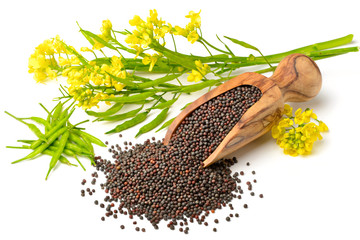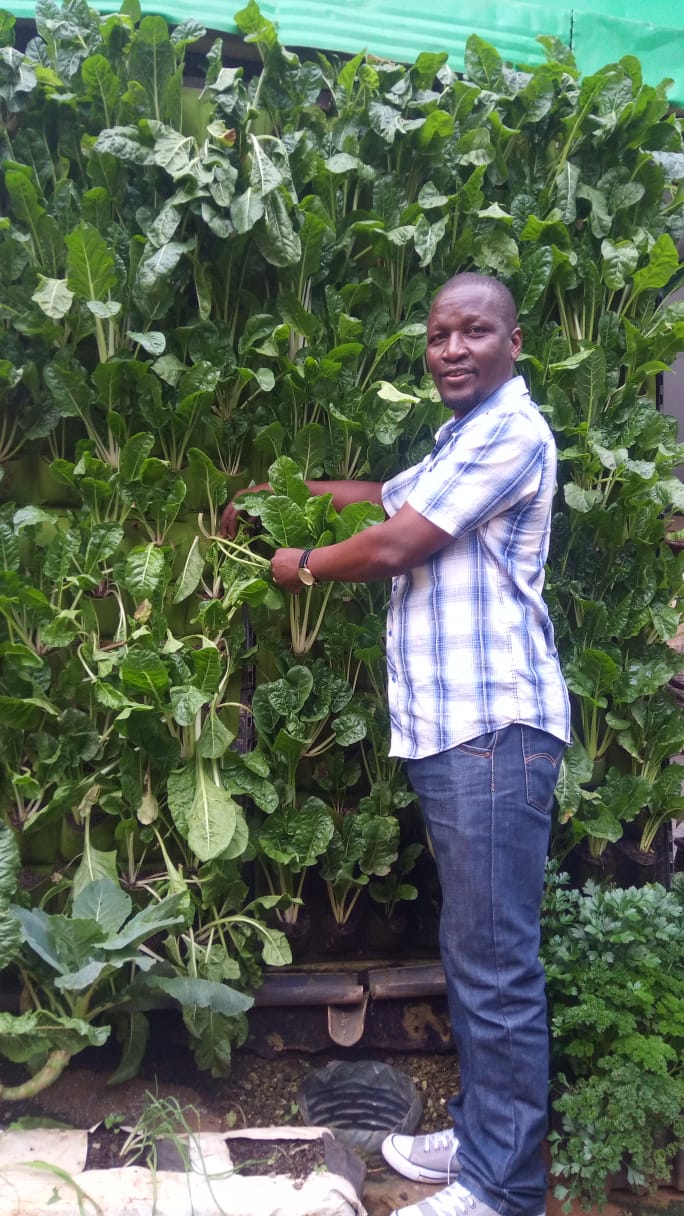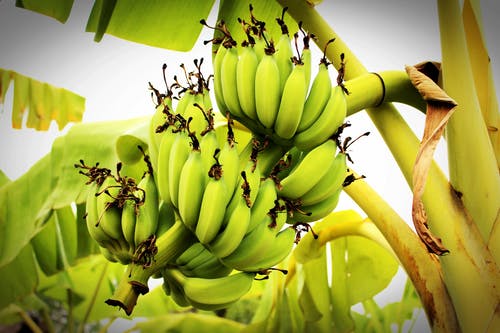 Following launch of Blue Band Cold Pressed Canola Oil and other products into the Kenyan market, Upfield, a plant-based margarine and spreads manufacturer, is now looking for over 3,000 farmers in Kenya to grow and supply the company with canola seeds, in order to meet the increasing demand for its canola-based products.Following launch of Blue Band Cold Pressed Canola Oil and other products into the Kenyan market, Upfield, a plant-based margarine and spreads manufacturer, is now looking for over 3,000 farmers in Kenya to grow and supply the company with canola seeds, in order to meet the increasing demand for its canola-based products.
Following launch of Blue Band Cold Pressed Canola Oil and other products into the Kenyan market, Upfield, a plant-based margarine and spreads manufacturer, is now looking for over 3,000 farmers in Kenya to grow and supply the company with canola seeds, in order to meet the increasing demand for its canola-based products.Following launch of Blue Band Cold Pressed Canola Oil and other products into the Kenyan market, Upfield, a plant-based margarine and spreads manufacturer, is now looking for over 3,000 farmers in Kenya to grow and supply the company with canola seeds, in order to meet the increasing demand for its canola-based products.
According to nutritionists, canola, also known as rapeseed, is grown for its highly nutritious oil containing omega 3, 6 and 9 fatty acids that have triggered rising demand for the oil in both global and local markets.
RELATED CONTENT:Oil firm buying canola, pumpkin, black and neem seeds from all-comers
Currently, Upfield, the Netherlands plant-based firm that bought Kenyan household margarine brand Blue Band from Unilever in 2017 is sourcing from 3,400 accredited small-scale farmers in the Mt Kenya Region, but it is now working to increase the number of the growers.
“This number is expected to increase to over 7,000 farmers in the coming years as demand for canola oil drives increased production,” said Peter Muchiri, Upfield East and Southern Africa Managing Directoror.
Upfield has a manufacturing plant in Nairobi and currently purchases over 2,000 tonnes of rapeseed for its Blue Band Cold Press Canola oil from its already contracted farmers.
Competition
The move by Upfield to increase its contracting comes as the canola subsector continues to grow.
The Kieni Canola Oil firm in Kieni, Nyeri County, was started by agro-entrepreneur David Kimondo Waiganjo in 2007, but manufactured its first canola oil in 2011, following delays caused by certification issues and insufficient farmers growing the crop as most farmers confined themselves to potato, beans, vegetables and maize production.
RELATED CONTENT:Fledgling Canola market stalls on lack of seeds
“I have come a long way in promoting the production of rapeseed farming among Kenyan farmers by attending various Agricultural Society of Kenya (ASK) shows across the country where I always secure a space to grow canola plants and exhibit the oil as well as using the opportunity to teach farmers on the crop production,” said Kimondo.
The agro-entrepreneur who is also a member of Agricultural Training Centres (ATC) or Agricultural Technology Developments Centres (ATDC) or Agricultural Mechanization Centres (AMC) in Nairobi, Kisumu, Kisii, Mombasa, Eldoret and Machakos has also been planting canola in those centres and using them as demonstration farms.
“It is now interesting that many players are coming to join in promoting the venture and provide our farmers with more markets and income. This, I hope, will not only encourage healthy competition for the benefit of the growers, but will also point farmers to high value crops such as canola,” said Kimondo.
 Canola seeds
Canola seeds
Today, Kieni Canola Oil industry produces over 2,000 kg of canola oil a day in addition to other oils, such as pumpkin seeds oil, at 20 litres a day, black seed oil, at 40 litres a month, neem seed oil, at 20 litres a month, and peanut oil, at 500 kgs a month.
Another local canola oil processor is Agventure Limited, which was started in 2008 and has been working with groups of local farmers in Kenya to grow canola among other herbs and spices for their product, Pure Mountain Farm Oil.
“We contract willing farmers who grow the crop and we assure them of a ready market, something that has always been a worry among them making them shy away from farming certain crops,” said John Mwiki, Agventure Limited agronomist.
After harvesting, the seeds are taken to the factory and tested against an in-house standard. The seed is then crushed using a Cold-Press crushing machine to ensure the oil does not exceed 40 Celcius at any point of production.mThe benefit to this is that there is no breakdown of the vitamins and minerals naturally found within the oil. After crushing, the oil then passes through a number of filters before being bottled and packed by hand.
“Some of our end products made from the seeds include herb infused cold-pressed canola oil, pure cold-pressed canola oil, chilli infused cold-pressed canola oil, honey-balsamic dressing and raspberry dressing,” said Mwiki.
RELATED CONTENT:Canola extracts curb potato nematodes
Possible returns for farmers
Rapeseed plants maturs within three months and are harvested when the seeds have a moisture content of about 35 per cent. The yield ranges from 750 - 1500kgs per acre translating to three to six tonnes per year per acre.
A kilo of rapeseed goes at Sh40, making for an average revenue per acre of around Sh180,000 and up to Sh240,000.
Meanwhile, rapeseed oil retails at Sh400 a litre, 200ml for Sh200, and 500ml for Sh250.
You can reach Kimondo on in+254 722 550053Agventure Limited can be reached on +254 704 599 594Upfield on 0800 221 5454 or +254 722 204 157/8
Write comment (0 Comments)



 For many urban and slums dwellers, space is limited, while for those living in areas with insufficient rains, the same is true of water. For all these growers, vertical sack gardening technology is emerging as a way to grow a large supply of vegetables despite the constraints.
For many urban and slums dwellers, space is limited, while for those living in areas with insufficient rains, the same is true of water. For all these growers, vertical sack gardening technology is emerging as a way to grow a large supply of vegetables despite the constraints. 1. Jembe -to dig the soil that will be mixed with other components for constructing the garden.2. Forkjembe -to dig the soil in hard ground areas.3. Spade -used in collection and mixing the soil components.4. Tinsnip/Knive - to cut the top part of the tin completely.5. Tin punch- to punch holes on the tins surfaces and the bottom.6. Wheelbarrow - to measure and transport the various soil parts to the recommended ratio.
1. Jembe -to dig the soil that will be mixed with other components for constructing the garden.2. Forkjembe -to dig the soil in hard ground areas.3. Spade -used in collection and mixing the soil components.4. Tinsnip/Knive - to cut the top part of the tin completely.5. Tin punch- to punch holes on the tins surfaces and the bottom.6. Wheelbarrow - to measure and transport the various soil parts to the recommended ratio. Hitherto, Richard Kebaso used to harvest small banana heads of between 40kg to 45 kg from his one acre farm in Nyamache, Kisii County, due to poor weeding practices. Hitherto, Richard Kebaso used to harvest small banana heads of between 40kg to 45 kg from his one acre farm in Nyamache, Kisii County, due to poor weeding practices.
Hitherto, Richard Kebaso used to harvest small banana heads of between 40kg to 45 kg from his one acre farm in Nyamache, Kisii County, due to poor weeding practices. Hitherto, Richard Kebaso used to harvest small banana heads of between 40kg to 45 kg from his one acre farm in Nyamache, Kisii County, due to poor weeding practices.











